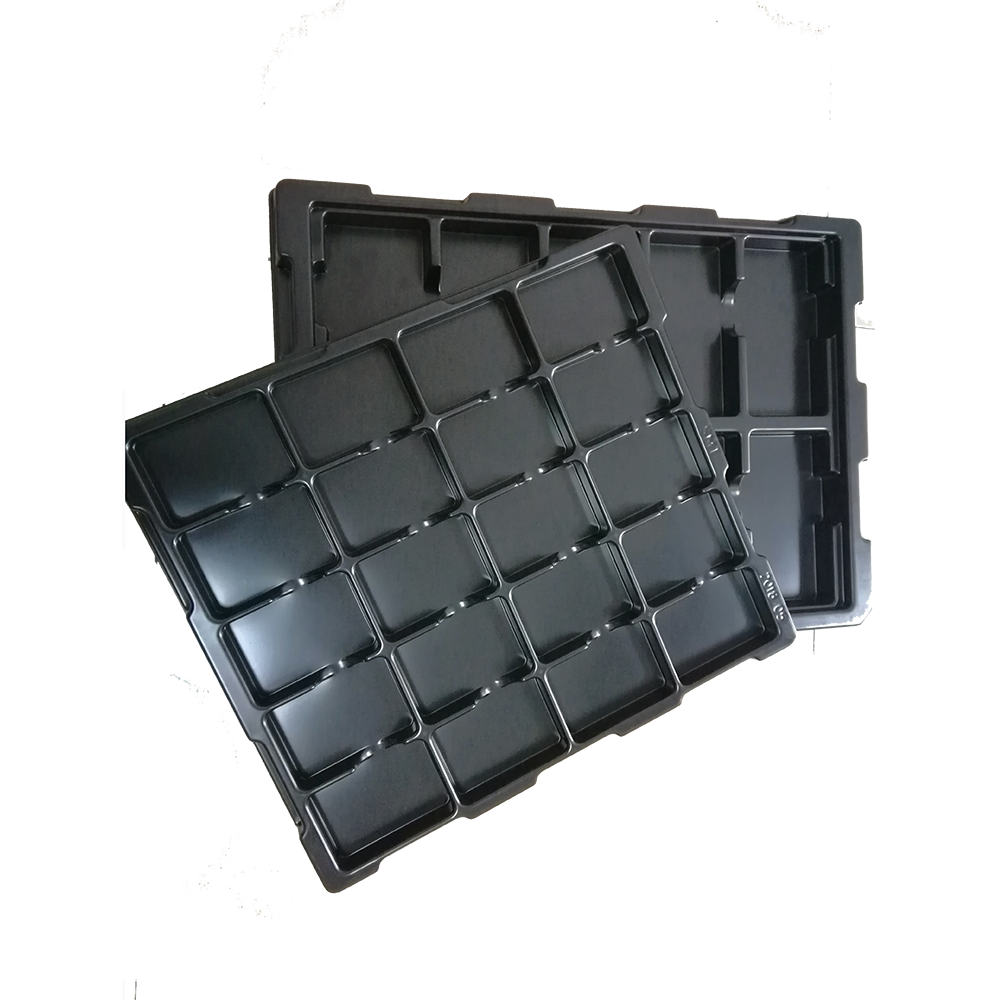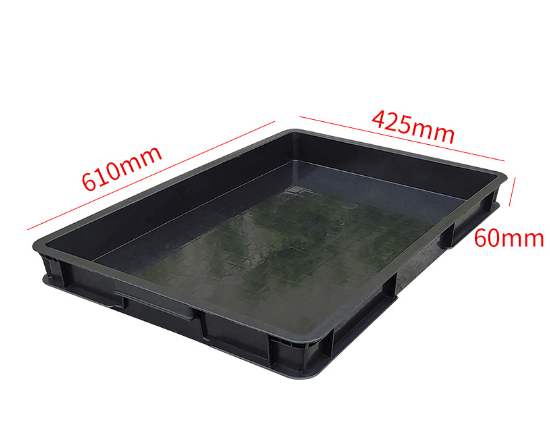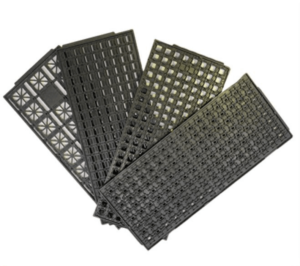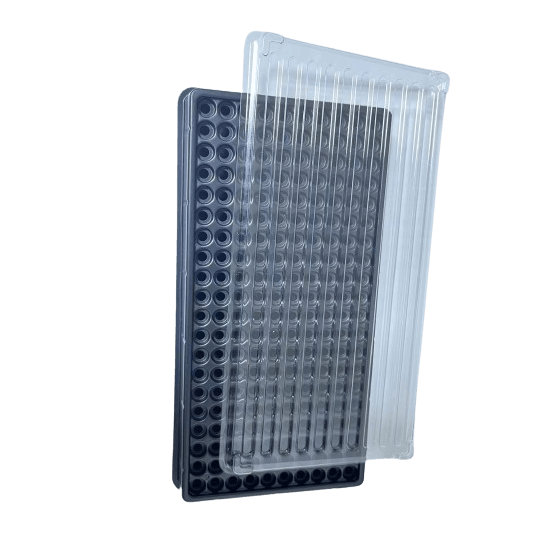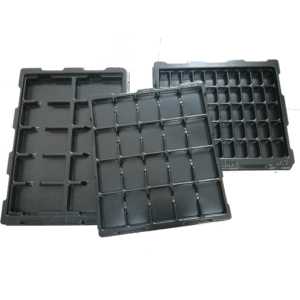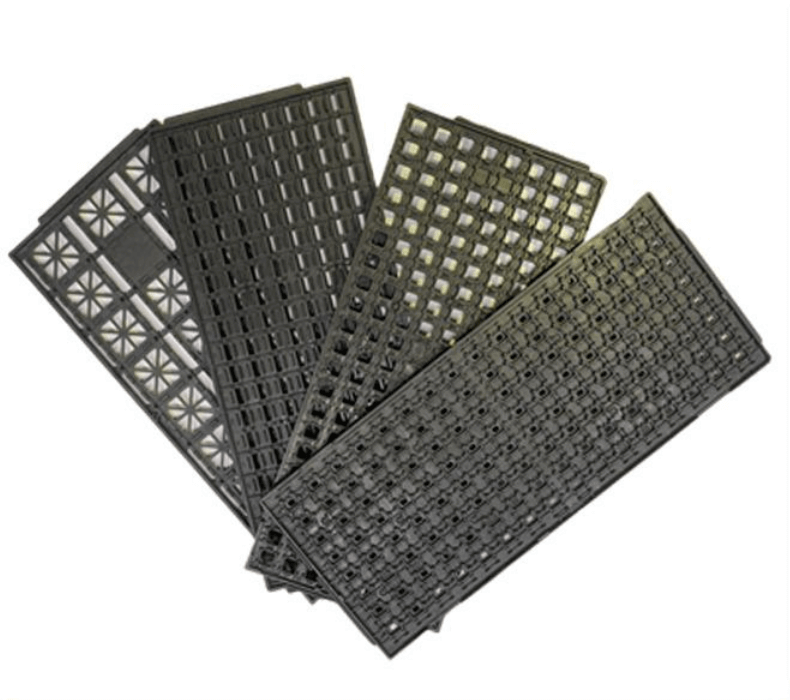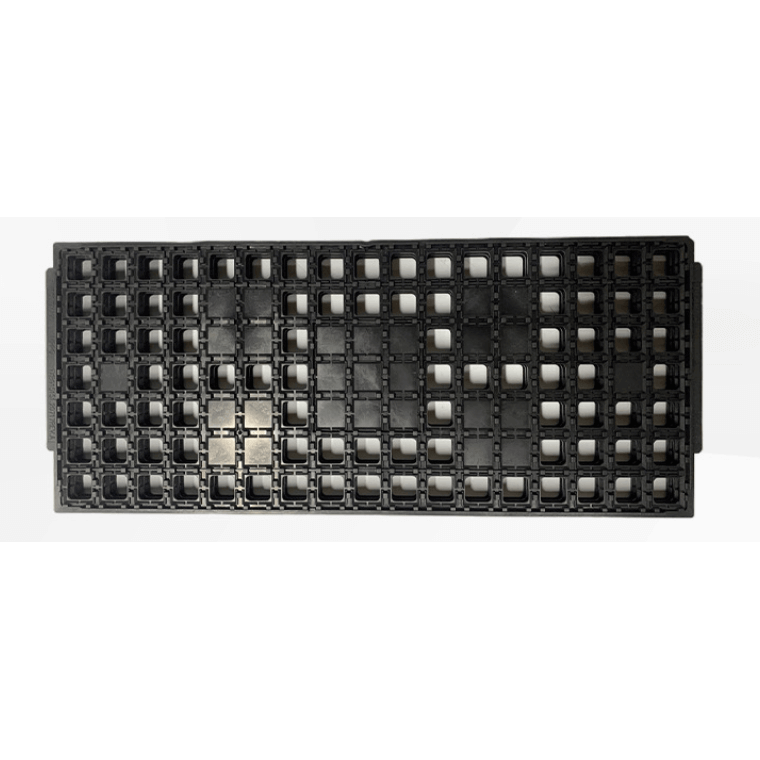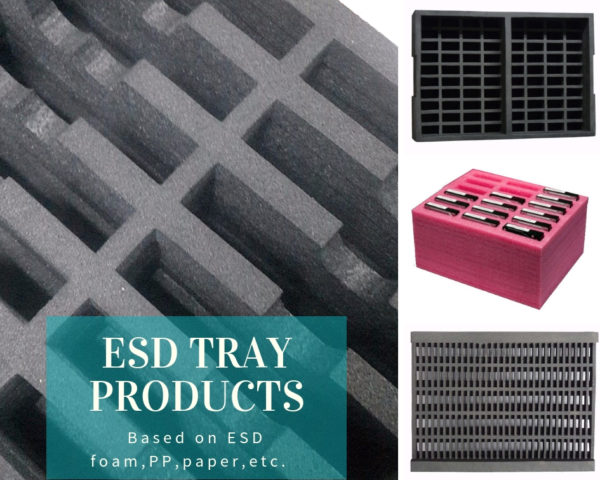ESD tray is specially designed containers that provide secure storage and transportation for ESD-sensitive devices. They are made from conductive or dissipative plastic materials to prevent the build-up of static electricity and its potential damage to electronic goods during the turnover loading, packaging, storage and tranportation of a large number of electronic devices and products. By grounding the electrical charge, plastic blister trays effectively shield against ESD, ensuring the safety and functionality of your electronics.
These plastic blister trays come in various sizes and configurations to accommodate different types of components. They feature compartments or cavities that securely hold the electronic devices in place, preventing them from moving during transit. The esd pacakging trays are typically transparent, allowing for easy identification and visual inspection of the components without the need for opening the package.
ESD tray is an integral part of an electrostatic discharge control program. They are commonly used in industries such as electronics manufacturing, assembly, and transport, where protecting sensitive electronic components from ESD is crucial.
Anti Static Tray Specifications
| Item | ESD Tray / Anti-static plastic tray / Plastic blister trays |
| Material | PP /PS / PET |
| Dimension | As customized |
| Thickness | 0.1-2mm |
| Color | Black / Transparent |
| Acceptable | |
| Payment | By T/T |
| Quality control | Our QC department consistently operates according to related standards throughout the whole process including: vendor appraisal, raw material inspection, production process inspection, and finish product inspection. |
| Packaging | Standard export carton or according to customer’s requests. |
| Mold fee | We'd charge it for samples, can be returned when order amount more than within half year |
| Usage | packaging, transferring and delivering of electronics |
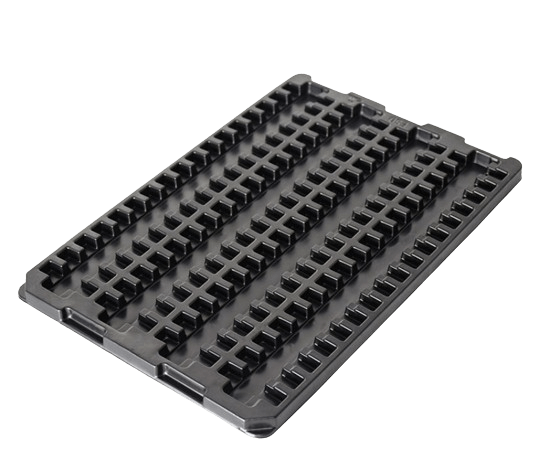
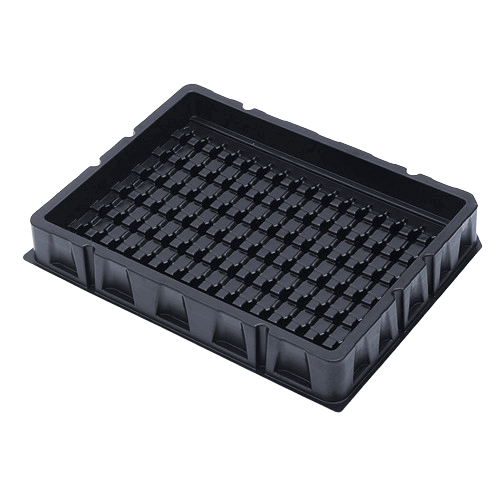
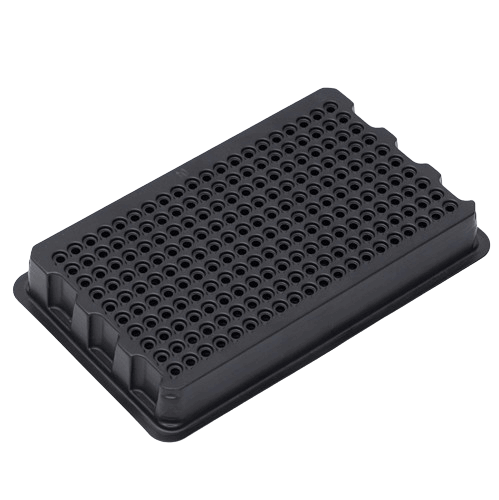
Advantages of using ESD tray
The use of static dissipative trays offers the following advantages for the protection of electronic equipment:
- ESD protection: The primary advantage of using ESD tray is the enhanced protection they provide against electrostatic discharge. By effectively grounding the electrical charge, these trays minimize the risk of ESD-induced failures and ensure the long-term functionality of electronic components.
- Secure storage and transportation: ESD packaging trays are designed to securely hold electronic devices in place, preventing movement and potential damage during storage and transportation. The compartments or cavities in the trays keep the components well-organized and protected, reducing the risk of accidental drops or collisions.
- Visual inspection: The transparent nature of ESD plastic blister trays allows for easy identification and visual inspection of the components without the need to open the package. This saves time and reduces the risk of accidental damage that can occur when handling the components directly.
- Cost-effective: ESD plastic trays are a cost-effective solution for ESD protection. Compared to other ESD control measures, such as static shielding bags or conductive foam, blister trays offer a reusable and durable option that can withstand multiple uses and provide long-term protection for your electronics.
- Ease of use: ESD packaging trays are easy to use and require minimal training. The trays are designed to be user-friendly, with features like snap-on lids or locks that securely seal the components inside. This ensures that the trays are properly closed and the components are protected at all times.
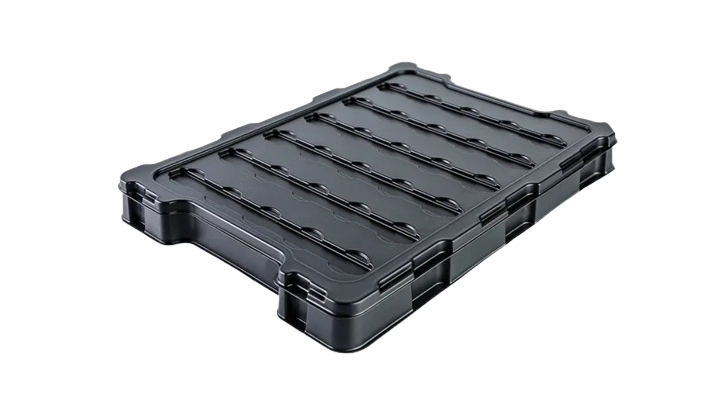
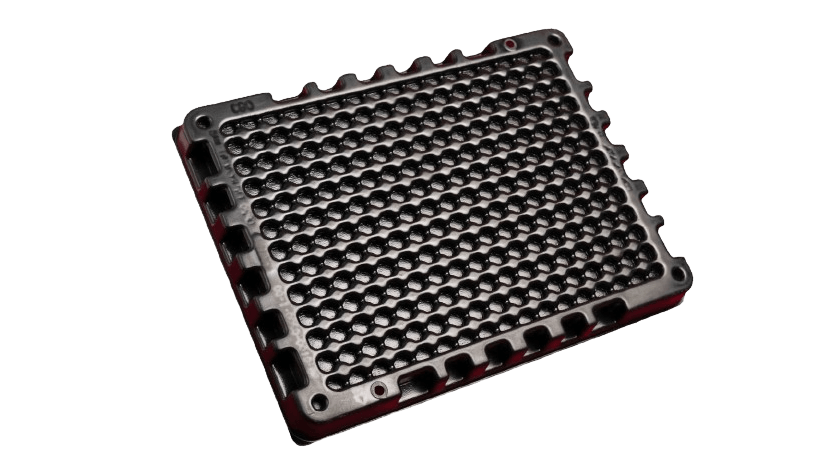
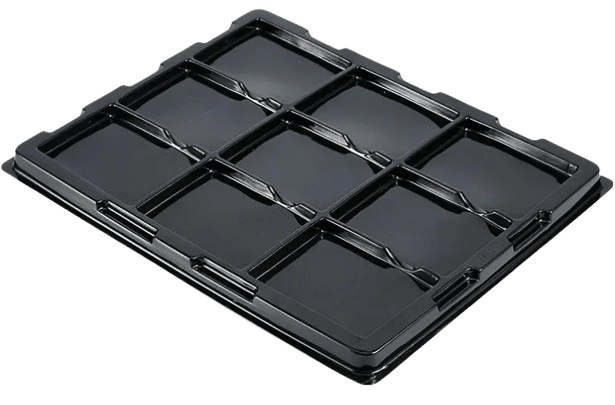
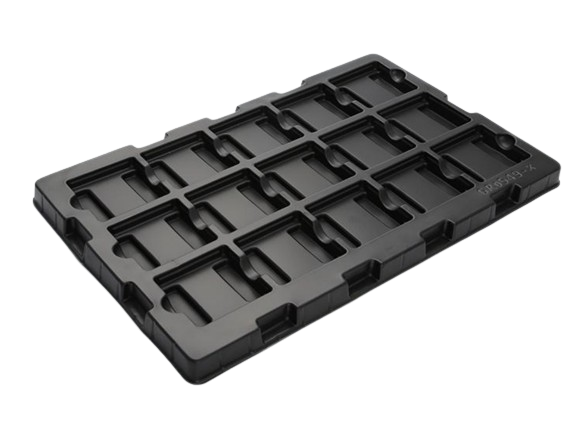
Anti Static Tray Functions
Anti static Tray is an ideal tool for storing electronic components. Due to the addition of a special polymer in the raw materials, make the finished product be permanent electrostatic dissipation. The finished product has good mechanical strength and heat-resisting property, strong impact strength and chemical corrosion resistance. It does not change its anti-static performance due to environmental and time temperature.
Anti-static tray can effectively release the accumulated electrostatic charge off the object surface, so that it will not generate charge accumulation and high potential difference, can greatly reduce the damage rate of the electronic products in the production process,which help to reduce costs, improve product quality and profitability.
Anti-static tray with anti-folding, anti-aging, bearing strength, stretching, compression, tearing, high temperature , be made into the turnover box, which can be used for turnover and also be used for finished goods packaging. it's lightweight, durable, stackable. Can be customized a variety of specifications, dimensions according to user needs. it can be equipped with cover, dustproof, anti-static, elegant appearance.
General anti-Static tray be designed according to the size of the customer, to achieve the most reasonable loading and overlap multiple pallets, effective save the plant space, increase the storage capacity of electronic components, PCB board, dust-free workshop parts , saving the production costs.
Anti-static mobile phone tray
In static electricity has been more and more attention to the majority of enterprises today, anti-static tray to help complete the turnover of electronic components, storage of the general, integrated management, production and distribution enterprises in the modernization of production management necessary products.
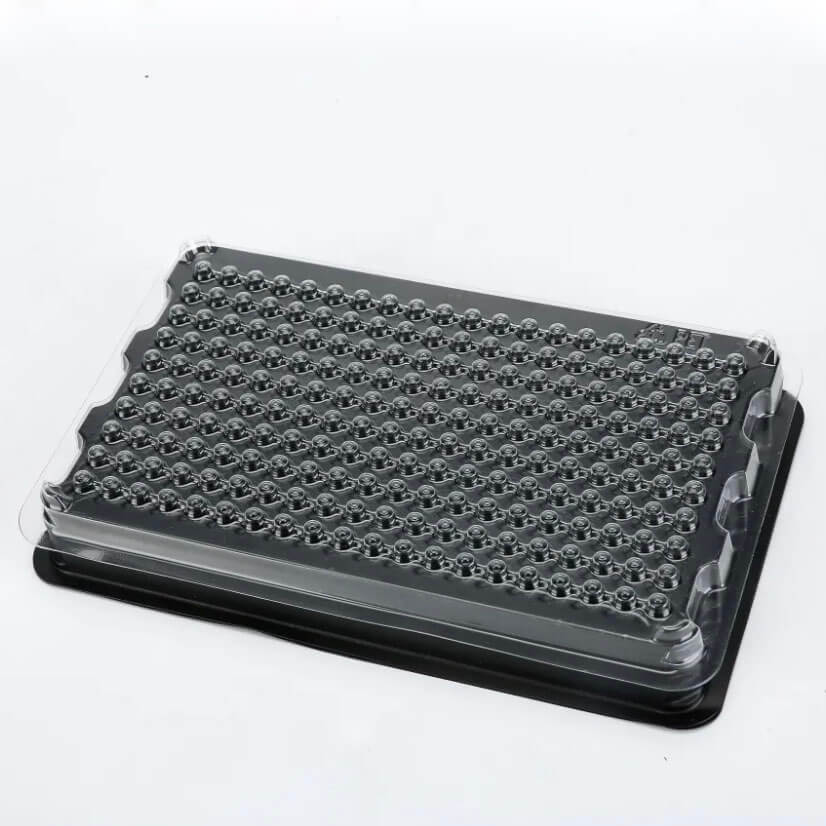
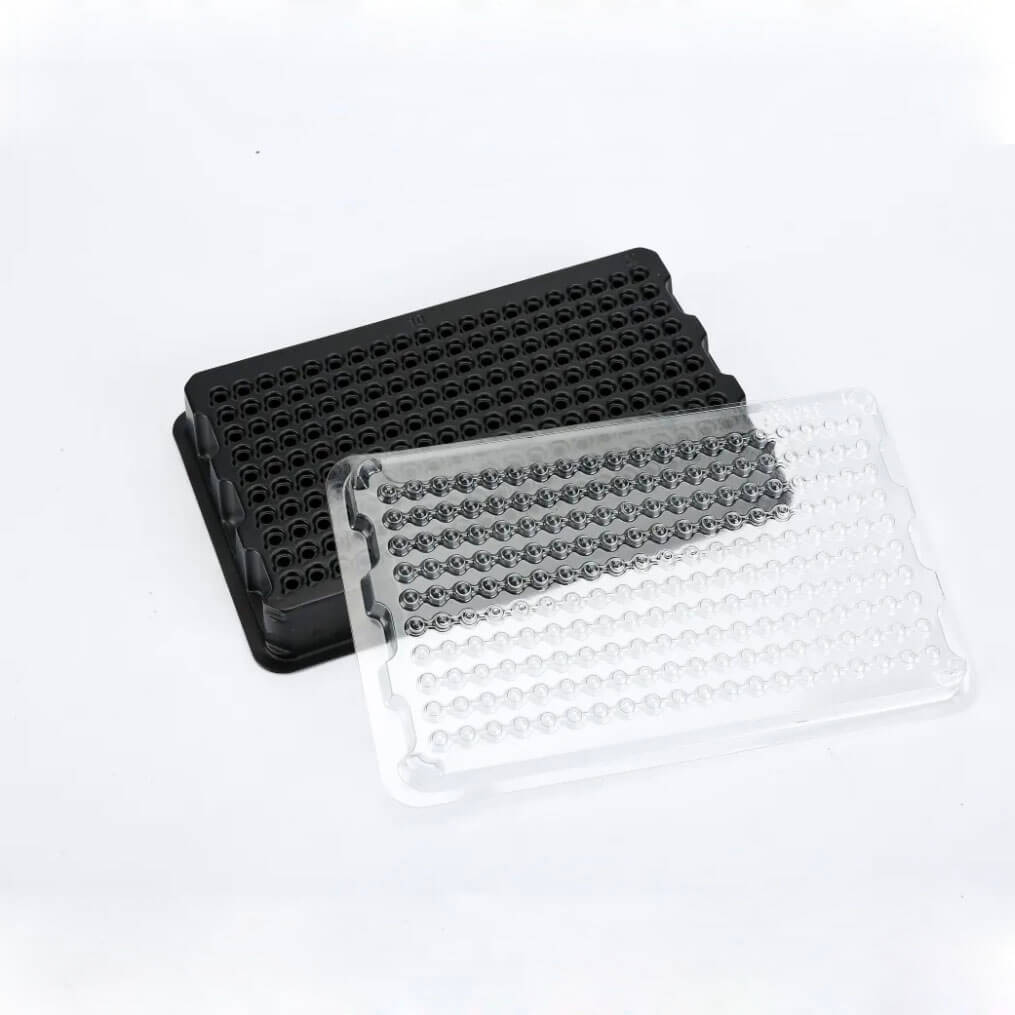
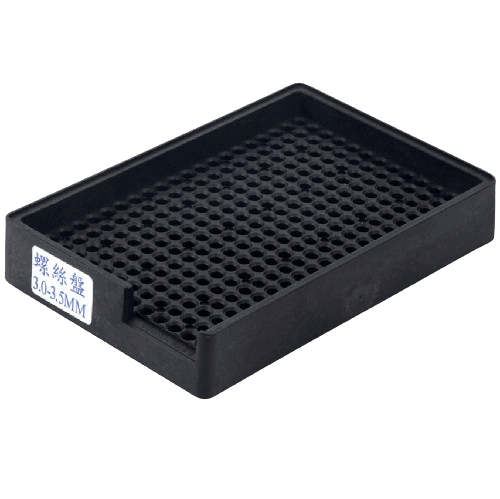
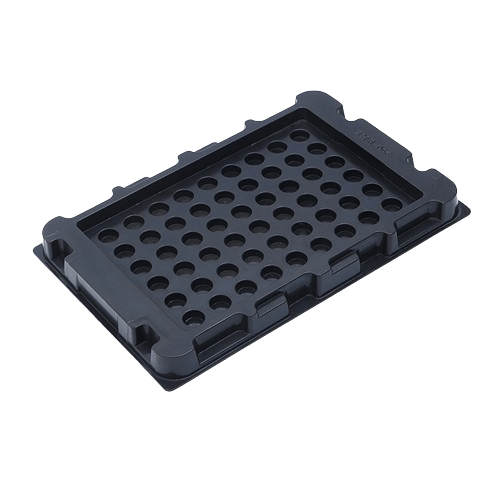
Types of ESD tray available in the market
According to the usage and structure, ESD blister trays are available in various types and configurations to suit different requirements. Here are some common types of ESD blister trays you can find in the market:
- Standard trays: These are the most common type of ESD blister trays available. They come in standard sizes and configurations and can accommodate a wide range of electronic components. Standard trays are cost-effective and widely used in industries where ESD protection is essential.
- Customized trays: For unique or specialized electronic components, customized blister trays are the ideal choice. These trays are designed and manufactured based on the specific dimensions and requirements of the components. Customized trays provide a precise fit, ensuring maximum protection for the components.
- Stackable blister trays: Stackable blister trays are designed to optimize storage space. These trays have interlocking features that allow them to be stacked securely, minimizing the footprint required for storage or transportation. Stackable trays are especially useful in industries with limited storage space.
- Conductive foam-lined trays: Some ESD blister trays feature a conductive foam lining that provides additional cushioning and protection for delicate components. The foam absorbs shocks and vibrations, reducing the risk of impact-related failures during transit.
- Static-shielding trays: Static-shielding blister trays are made from materials with low surface resistivity and a metallic layer that provides complete protection against ESD. These trays are suitable for extremely sensitive electronic components that require the highest level of ESD protection.
According to physical properties can be divided into: Anti-static ( the surface resistance 10^6-10^9) and Conductive (surface resistance 10^3 - 10^5).
Factors to consider when choosing ESD trays
When selecting ESD trays for your specific needs, consider the following factors:
1. ESD sensitivity of the components: Determine the level of ESD sensitivity of your electronic components. Highly sensitive components may require more robust ESD protection, such as conductive or static-shielding blister trays.
2. Size and dimensions: Choose blister trays that can accommodate the size and dimensions of your components. Ensure that there is enough space within the trays to safely house the components without the risk of damage or movement.
3. Quantity and frequency of use: Consider the quantity of components you need to store or transport and the frequency of their use. If you have a high volume of components or require frequent access, stackable and easy-to-open blister trays may be more convenient.
4. Durability and reusability: Evaluate the durability and reusability of the blister trays. Look for trays that are made from high-quality materials and can withstand repeated use without compromising their ESD protection capabilities.
5. Compatibility with other ESD control measures: If you already have an existing ESD control program in place, ensure that the selected blister trays are compatible with other ESD control measures, such as grounding straps or ESD workstations.
Best practices for using ESD trays
To maximize the effectiveness of ESD trays and ensure the optimal protection of your electronics, consider the following best practices:
- Proper handling and grounding: When using ESD trays, it is essential to practice proper handling techniques and grounding procedures. Ensure that both the tray and the components are properly grounded to prevent the accumulation of static electricity.
- Regular inspections: Regularly inspect the blister trays for any signs of damage or wear. Damaged trays may compromise their ESD protection capabilities and should be replaced promptly.
- Proper storage: When not in use, store the blister trays in a clean and dry environment to minimize the risk of contamination or damage. Keep the trays away from sources of moisture, extreme temperatures, and direct sunlight.
- Training and awareness: Train your employees on the proper use and handling of ESD trays. Create awareness about the importance of ESD protection and the potential risks associated with electrostatic discharge.
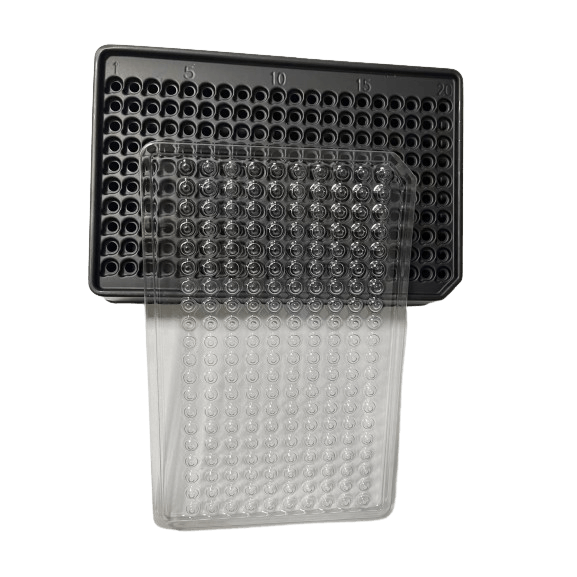
Anti Static Tray Applications
Blister tray materials commonly used in blister materials such as PVC, PS, PP, ABS, PET. As different applications, the anti static trays, also called PCB trays, ESD circuit board trays, ESD assembly tray, ESD shipping trays, ESD waffle trays, ESD IC trays, Jedec Tray and so on.
Selection different tray should consider the following aspects:
- According to the use of products and product requirements performance.
- Consider the cost of materials..
- Anti-Static Requirements and environmental requirements.
- Consider the processing conditions of materials LCD screen display products commonly used in white PS material, black PVC material, the price is relatively moderate.
ESD trays are an essential tool for protecting your electronics from the damaging effects of electrostatic discharge. By providing a controlled environment that dissipates or conducts static electricity, these trays ensure the safety and functionality of sensitive electronic components. With various types and configurations available, you can choose the right ESD trays to suit your specific needs. Implementing ESD trays as part of your ESD control program will provide the peace of mind that comes with knowing your electronics are well-protected. Contact us for latest price and more information.


